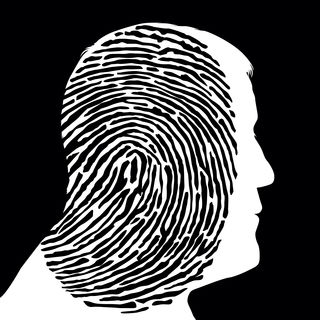Law and Crime
How the FBI Profiles Serial Offenders
Profiling is a comprehensive six-step process.
Posted May 6, 2019 Reviewed by Devon Frye

Criminal profiling is a cross between law enforcement and psychology. It is still a relatively new field with few set boundaries or definitions. Practitioners of criminal profiling do not always agree on methodology or even terminology.
Despite their disagreements, however, practitioners of profiling all share a common goal of analyzing evidence gathered at a crime scene and statements provided by victims and witnesses in order to develop a description of an unknown offender. The offender description can include psychological factors such as antisocial personality traits, psychopathologies, or behavioral patterns, as well as demographic variables including, age, race, and geographic location.
The FBI system of criminal profiling, which dates back to the 1980s, involves a comprehensive six-step process. As noted by Peter Vronsky in his 2004 book Serial Killers: The Method and Madness of Monsters, each step is critical to the overall system, so the quality of input at each step directly influences the subsequent steps.
Step 1: Profiling Inputs
Step 1 involves the gathering and organizing of all relevant case information. This includes such items as a detailed report on the criminal investigation, crime scene photographs, a description of the neighborhood or area in which the murder occurred, the medical examiner’s report, a timeline of the victim’s movements immediately before death and a detailed background profile of the victim.
Step 2: Constructing a Decision Process Model
In this step, the fundamental characteristics and details of the homicide are established. These include whether the killing was a serial or single murder, whether the homicide was the primary objective of the killer or incidental to another crime, whether the victim was a high-risk individual such as a homeless person or a female sex worker versus a low-risk individual such as a professional, married man.
Additional factors used in constructing the decision process model include whether the victim was killed at the scene of the attack or elsewhere and, if elsewhere, the characteristics of the scene where the murder might have occurred.
Step 3: Crime Assessment
Step 3 of the process is the most involved. In this step, profilers decide whether the crime scene has the characteristics of an organized offender, disorganized offender, or a mix of both. The breakthrough idea of classifying serial homicide crime scenes according to an organized/disorganized dichotomy is credited to the late FBI agent and profiler Roy Hazelwood.
Profilers use a list of factors such as whether the victim’s body was positioned or posed by the killer, whether sexual acts were performed before or after death and whether cannibalism or mutilation was practiced on the body. These factors are used to predict whether an unknown offender is an organized or disorganized killer. The organized/disorganized classification of offenders is the centerpiece of the FBI profiling approach and is explained below.
Organized Offenders
According to the offender and crime scene dichotomy, organized crimes are premeditated and carefully planned, so little evidence is normally found at the scene. Organized criminals, according to the classification scheme, are antisocial—but know right from wrong—are not insane, and show no remorse.
Based on historical patterns, organized killers are likely to be above average to average intelligence, attractive, married or living with a domestic partner, employed, educated, skilled, orderly, cunning, and controlled. They have some degree of social grace, may even be charming, and often talk and seduce their victims into being captured.
With organized offenders, there are typically three separate crime scenes: where the victim was approached by the killer, where the victim was killed, and where the victim’s body was disposed of. Organized killers are very difficult to apprehend because they go to inordinate lengths to cover their tracks and often are forensically savvy, meaning they are familiar with police investigation methods. They are likely to follow the news media reports of their crimes and may even correspond with the news media. Ted Bundy, Joel Rifkin, and Dennis Rader are prime examples of organized killers.
Disorganized Offenders
Disorganized crimes, in contrast, are not planned and the criminals typically leave evidence such as fingerprints or blood at the scene of the murder. There is often no attempt to move or otherwise conceal the corpse after the murder. Disorganized criminals may be young, under the influence of alcohol or drugs, or mentally ill. They often have deficient communication and social skills and may be below average in intelligence.
The disorganized offender is likely to come from an unstable or dysfunctional family. Disorganized offenders often have been abused physically or sexually by relatives. They are often sexually inhibited, sexually uninformed, and may have sexual aversions or other pathologies. They are more likely than organized criminals to be compulsive masturbators. They are often isolated from others, live alone, and are frightened or confused during the commission of their murders. They often do not have reliable transportation, so they kill their victims closer to home than organized offenders.
Significantly, disorganized killers will often “blitz” their victims—that is, use sudden and overwhelming force to assault them. The victim’s body is usually left where the attack took place and the killer makes no attempt to hide it. Jack the Ripper is a classic example of the disorganized serial killer.
It is also important to note that a serial murder case can also be a mix of organized and disorganized. This occasionally occurs, for example, when there are multiple offenders of different personality types involved in the killings. It can also occur when a lone offender is undergoing a psychological transformation throughout his killing career.
Step 4: Criminal Profile
In step 4 of the process, the FBI profiler produces a report for local investigators that predicts the possible personality, physical, and social characteristics of the unknown offender. The profile lists objects that might be in possession of the killer, such as pornography, and may propose strategies for identifying, apprehending and even questioning the accused. An FBI profile can vary in length from a few paragraphs to a number of pages depending on how much information the FBI had to analyze at the input step.
Step 5: Investigation
In step 5, the local police department incorporates the criminal profile developed by the FBI into its own investigative strategy. Using the specific characteristics outlined in the FBI profile, local law enforcement authorities can narrow the list of suspects and implement strategies that are likely to lead to an arrest. If/when additional murders occur or additional information is discovered, the profile can be updated or expanded by the FBI during the investigation stage.
The first high-profile case in which FBI profilers successfully assisted local authorities in a hunt for an unidentified serial killer was the Atlanta child murders of the early 1980s. Pioneering FBI profilers John Douglas and Roy Hazelwood were sent to Atlanta to work with local police and develop a profile in order to assist in the massive search for the killer.
Step 6: Apprehension
The final step of the FBI profiling process is apprehension. This is the accountability or proof-of-performance step. The accuracy of an FBI profile can be determined by matching its characteristics and details to those of the actual offender in custody. In the case of the Atlanta child murders, for example, the profile developed by FBI agents Douglas and Hazelwood proved to be extremely valid. When Wayne Williams was arrested in 1981, as predicted in the profile, he was a single, young, black male who owned a German shepherd dog, as well as a vehicle fitted with police lights that he used to impersonate a police officer and lure his young victims.
The results of such successful investigations are added to the database in Quantico and the computerized algorithms used by the profiling system are fine-tuned in order to increase profiling accuracy in the future.




